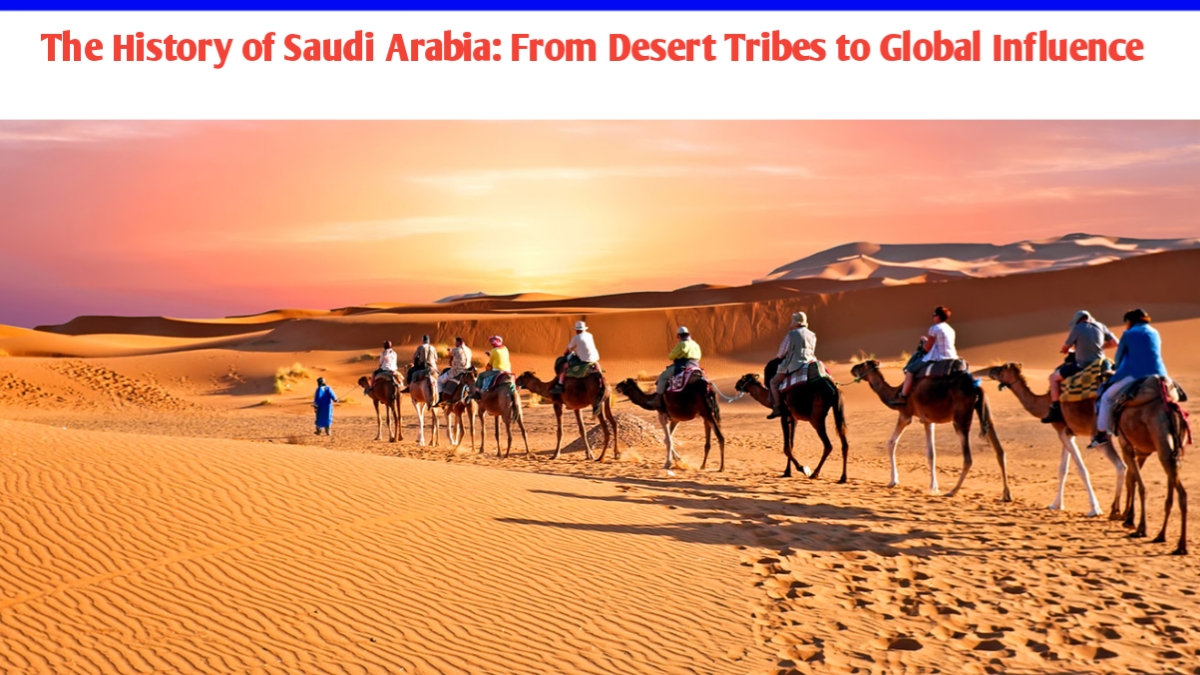The History of Saudi Arabia: From Desert Tribes to Global Influence
The Ancient Roots and Formation of a Kingdom
Saudi Arabia’s history is a fascinating journey from ancient desert tribes to the establishment of one of the most influential nations in the world. Located in the Arabian Peninsula, the region has been inhabited since prehistoric times, with evidence of early human settlements dating back thousands of years.
The Arabian Peninsula has long been a crossroads of civilizations, trade routes, and cultures, shaping its unique historical and cultural landscape.
The Birth of Islam and Early Islamic Caliphates
The most significant event in the history of Saudi Arabia is the birth of Islam in the 7th century. The Prophet Muhammad, born in Mecca around 570 CE, founded Islam, which rapidly spread throughout the Arabian Peninsula and beyond.
Mecca and Medina, two of Islam’s holiest cities, became the center of the new faith, attracting pilgrims and scholars from around the world.
Reading more… One-Third of Shark Species Face Extinction: A Call to Action for Global Conservation
Following the death of Muhammad in 632 CE, the region was governed by a series of Islamic caliphates, including the Rashidun, Umayyad, and Abbasid Caliphates. These caliphates not only expanded the reach of Islam but also promoted advancements in science, culture, and trade, leaving a lasting impact on the region’s development.
The Rise of the House of Saud
The modern state of Saudi Arabia traces its origins to the 18th century with the alliance between Muhammad ibn Saud, a local tribal leader, and Muhammad ibn Abd al-Wahhab, a religious reformer. This alliance, formed in 1744, aimed to purify Islam and establish a unified state under strict adherence to Islamic principles.
The partnership laid the foundation for the future Saudi state, known as the First Saudi State, which expanded its territory but was eventually defeated by the Ottoman Empire in the early 19th century.
The resurgence of Saudi power came in the early 20th century with Abdulaziz Ibn Saud, who began his campaign to reclaim and unify the Arabian Peninsula. By 1932, Ibn Saud successfully established the Kingdom of Saudi Arabia, uniting the disparate tribes and regions under a single monarchy.
His leadership marked the beginning of a new era for the kingdom, focusing on modernization and consolidation of power.
The Discovery of Oil and Economic Transformation
The discovery of vast oil reserves in the 1930s transformed Saudi Arabia’s economy and global standing. In 1938, American geologists discovered oil in the Eastern Province, leading to the establishment of the Arabian American Oil Company (ARAMCO).
The subsequent oil boom brought immense wealth to the kingdom, funding rapid development and modernization projects.
Saudi Arabia’s oil industry became the backbone of its economy, propelling the country to become one of the world’s leading oil producers and exporters. The newfound wealth enabled the kingdom to invest in infrastructure, education, healthcare, and other sectors, significantly improving the standard of living for its citizens.
Political Developments and Regional Influence
Saudi Arabia’s political landscape has been shaped by its monarchy, which maintains strict control over the government and society. The kingdom adheres to a conservative interpretation of Islamic law (Sharia), influencing its legal and social policies.
The Saudi royal family has navigated various internal and external challenges, including political dissent, economic fluctuations, and regional conflicts.
On the international stage, Saudi Arabia has played a crucial role in regional and global politics. As a founding member of the Gulf Cooperation Council (GCC) and the Organization of the Petroleum Exporting Countries (OPEC), the kingdom wields significant influence over global oil markets and regional security.
Saudi Arabia’s strategic alliances with Western powers, particularly the United States, have also shaped its foreign policy and defense strategies.
Modernization and Vision 2030
In recent years, Saudi Arabia has embarked on an ambitious program of economic and social reforms known as Vision 2030. Spearheaded by Crown Prince Mohammed bin Salman, the initiative aims to diversify the economy, reduce dependence on oil, and promote social and cultural development. Key aspects of Vision 2030 include investment in non-oil industries, tourism, entertainment, and women’s empowerment.
Notable reforms under Vision 2030 include the lifting of the ban on women driving, the introduction of entertainment venues like cinemas and concerts, and efforts to attract foreign investment. These changes mark a significant shift in the kingdom’s approach to modernization and global integration.
Conclusion
The history of Saudi Arabia is a rich tapestry of ancient traditions, religious significance, and transformative developments. From the rise of Islam to the discovery of oil and the ambitious Vision 2030 reforms, the kingdom has continually adapted to changing circumstances while maintaining its cultural and religious heritage.
As Saudi Arabia continues to evolve, its historical journey provides valuable insights into its current and future trajectory on the global stage.
How did you like the information given in our article today, please tell us in the comment section and for more such posts, follow our page The News House, thank you

